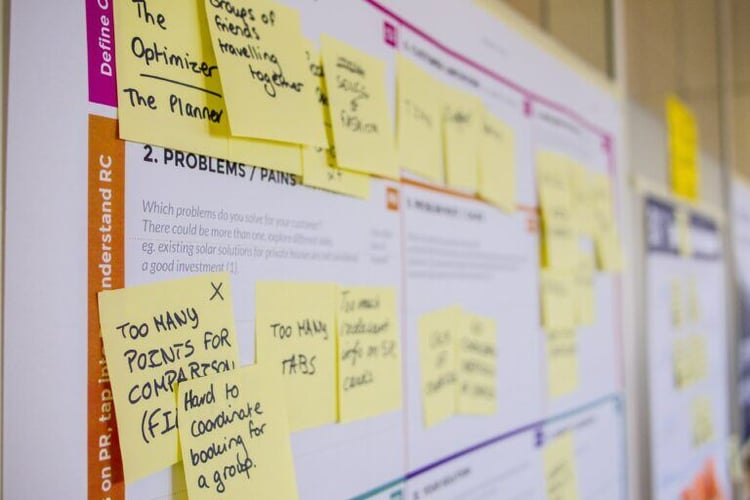Key HR Trend Five: Transformative Technologies Changing HR

Welcome back to Skillcentrix’s deep dive into the key trends in HR, talent, and skills for 2023.
As a quick recap, here are the trends we’ve already covered in our three previous segments: Trend #1: HR Leaders Must Develop Recession-Proof Talent Strategies; Trend #2: A New CHRO Mandate Emerges (to Drive Digital Transformation and Evolving Business Mandates); Trend #3: Talent and Skills Strategies Emerge As Crucial Competitive Advantages, and Trend #4: Agile Comes to Manage the Workforce.
Our penultimate trend for 2023 (I just love to use that word), opens the door to understanding more of the technology evolving around us and challenges HR teams to embrace all the new emerging technologies that can help you get better, faster, and more effective at serving your workforce.
But the idea of embracing new tech can be easier to say than it is to execute, and sometimes intimidating. While many LinkedIn profiles today are talking about how they’re experimenting with ChatGPT, for example, having a comprehensive approach to testing new technology innovation can be a challenge in the best of times – and even harder with so many competing priorities around you to focus on, and fires to put out.
An Innovation Mindset for HR Tech
Technology itself is constantly evolving, progressing, and reacting to the world around us – we must be ready to keep up accordingly in order to cash in on all of its advantages. That’s a lot to ask, especially as you consider all the new HR tech innovations revolving around your talent lifecycle.

As you can see in our HR Tech Landscape overview, there are more than a dozen “critical” HR and Talent applications – building out from your core HCM system of record (like Workday) and working through every aspect of your talent lifecycle. And that list keeps growing! According to Traxn, there were 33,000 new HR tech start-ups as of September 2022.
To help your teams get their arms around these advances, Skillcentrix CTO, Josh Lumbreras recommends looking at embracing emerging technologies as a mindset to adopt, not a task to complete.
That can feel daunting, or like your work is never done.
But don’t fall victim to this pessimistic (or maybe even a little closed-minded) narrative. Tap into your inner curiosity when learning about emerging tools and technologies, and allow space for them to inspire new ways to approach work.
The Five Big HR Tech Plays to Know in 2023
We asked Josh to share the most inspirational new technologies he believes all HR leaders should know for 2023. So here’s his list of the five biggest technology advances that are revolutionizing the field of human resources, and helping HR professionals streamline and automate critical processes, such as recruiting, employee onboarding, performance management, and workforce planning. (Drumroll, please!)
- Artificial intelligence (AI) and Machine Learning (ML): HR departments use AI and machine learning to automate various hiring processes, like resume screening and candidate matching. Teams can also use AI-powered chatbots to answer employee questions and provide near-instant support for common requests/inquiries regarding benefits and company protocols. Leading HR tech platforms (like the Workdays of the world) have been investing in new platform advances and partnerships to bring the power of AI to your existing tech stack. And, as the new ChatGPT launch earlier this year proves, the future of using AI or ML for business is just beginning. There’s so much opportunity here to explore how to drive efficiency in your teams, and perhaps automate some of the more manual processes you’re dealing with daily to open your teams up for higher-order work. However, for most AI programs, your ability to automate is only as good as your data layer. So step one on your AI journey might just be to look for some quick-win automation options, and make sure your data house is in order.
- Predictive analytics: Predictive analytics use data and machine learning algorithms to predict future outcomes. HR teams most commonly use predictive analytics to identify potential risks and opportunities, such as employee turnover or leadership potential. By highlighting these areas for review, teams are more likely to act during pivotal moments for employees and improve their overall employee experience. Similarly to new AI advances, leading HCM platforms are layering in predictive analytic capabilities and big data mining into their core platform functionality, for example, in people analytics and workforce planning. If you’re looking for ways to make better people decisions, faster, looking into predictive options might be a great first win.
- Process Mining: Process mining allows organizations to identify inefficiencies in their processes and make improvements. For example, if the hiring process is taking longer than expected, business process mining can help identify the root cause of the delay and suggest ways to bridge those gaps. This is particularly useful for identifying compliance issues or opportunities for process standardization. Finally, business process mining can help organizations identify opportunities for automation, resulting in increased efficiency and reduced costs (both of which are two top priorities for business leaders this year).
- Robotic Process Automation (RPA): HR teams can use Robotic Process Automation (RPA) effectively by identifying and automating repetitive, rule-based tasks that are time-consuming and prone to errors. Teams can identify tasks that are repetitive, time-consuming, and require minimal human intervention. Examples of such tasks include data entry, scheduling, and candidate feed. Then prioritize the tasks that need to be automated based on the frequency and importance of the task. This will help in selecting the most suitable use cases for the automation process.
- Gamification Apps: Our last trend, gamification involves using game-like elements, such as points and rewards, to motivate and engage employees. In HR, gamification approaches are a huge boon to your organizational change management game and are being used to drive employee participation in learning and development programs, as well as to increase engagement in performance evaluations.
And there you have it, the five emerging HR technology elements you should have on your radar this year.
What do they all have in common? All of them can be leveraged to help HR professionals streamline siloed workflows, increase efficiencies, and strengthen employee support and engagement.
As these technologies continue to evolve and become more widely adopted, they will increasingly impact and inform the future of HR. According to Josh, the potential of these technologies to help transform everyday work for your HR teams is “absolutely magnetic.”
So, if you’re ready to take your organization to new heights in 2023 (or even just try and free up some extra busy work and manual processing to improve daily employee satisfaction), get ready to lean into the power of emerging tech!


![Key trends in Workday HR strategy for 2023 [Part One]](https://skillcentrix.com/hs-fs/hubfs/Imported_Blog_Media/planet-volumes-v_CQ10cps_Y-unsplash-768x439-2.jpg?height=500&name=planet-volumes-v_CQ10cps_Y-unsplash-768x439-2.jpg)